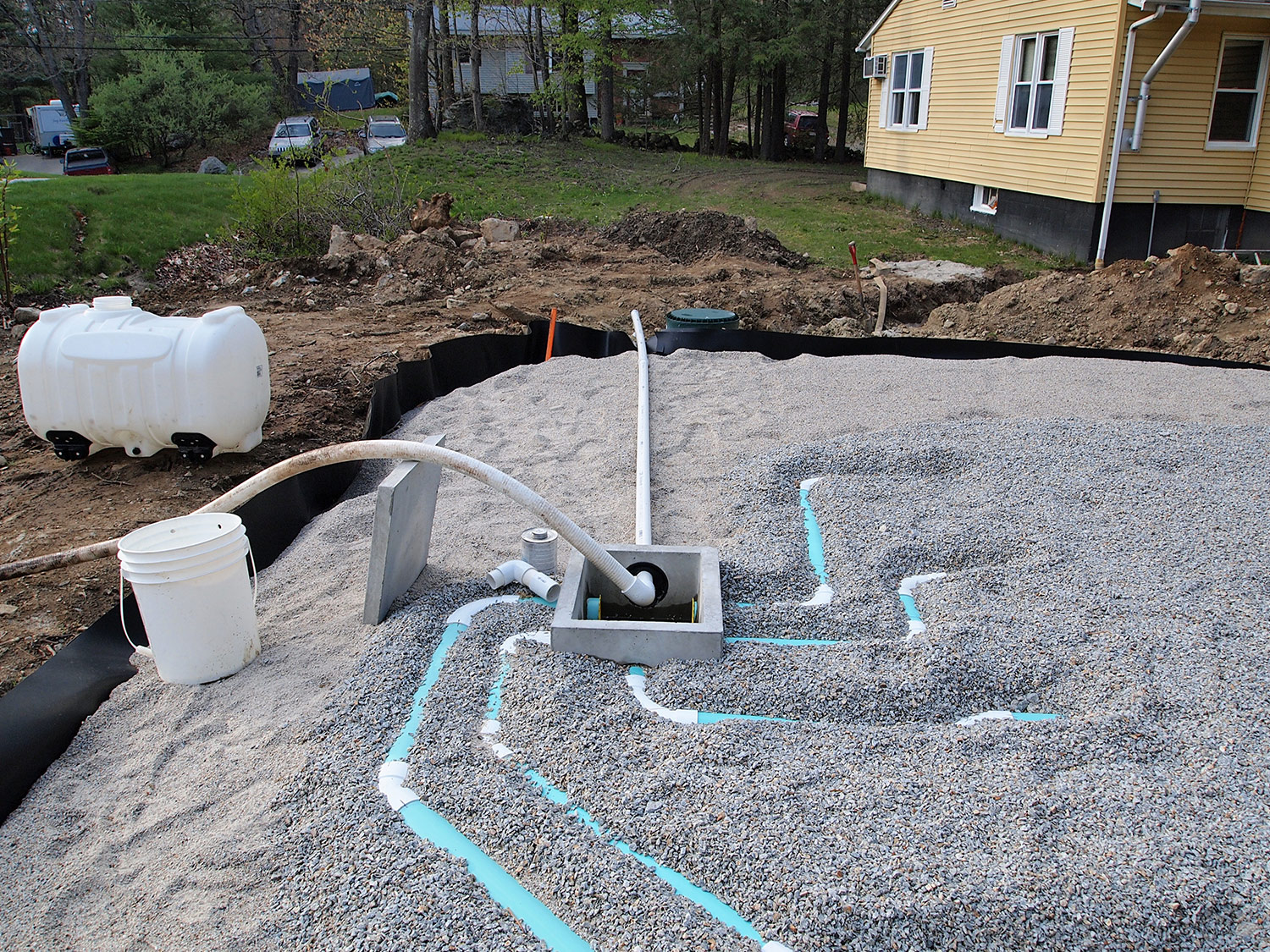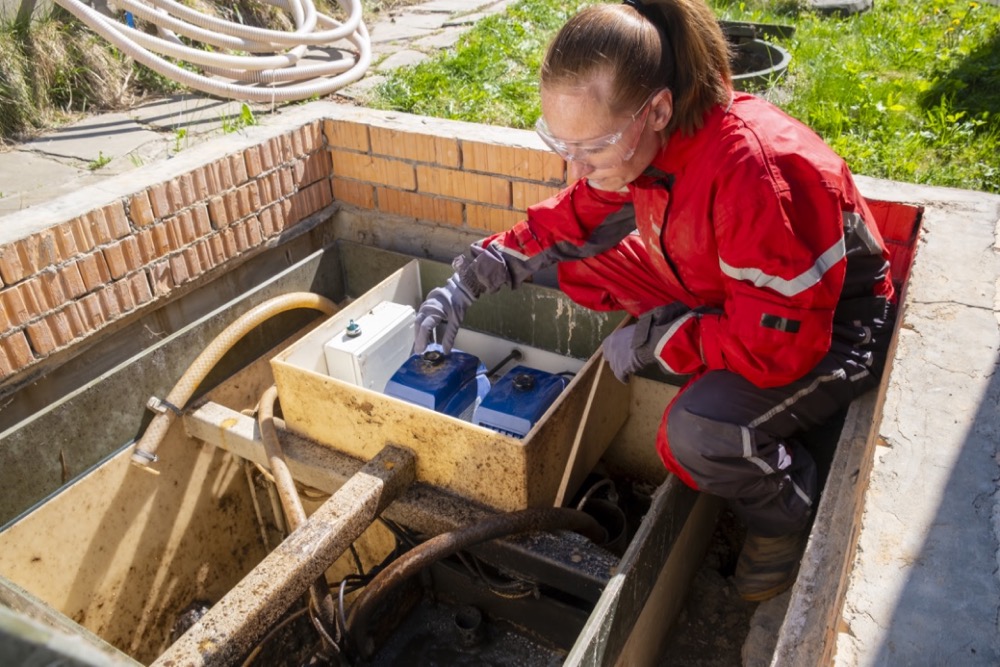
Are you wondering what a septic system is and how it works? Maybe you are wondering what type of septic system you have.
When people look for answers to these questions, it is often because the septic system needs repair or replacement.
Do you need to replace your septic system? Are you interested in understanding the costs of septic system replacement?
If you’re considering buying a home that needs a new septic tank system or getting a construction loan to build a new property, you might need to know a typical septic system’s cost.
The costs involved with buying such a system are significant as it requires a lot of work from your contractor.
Many factors affect typical septic system costs.
Let’s examine what you need to consider when installing a new septic system and replacing an existing one.
What is a Septic System?
A septic system is an underground wastewater treatment structure most often used when a municipal sewer system is unavailable.
They are commonly found in rural areas rather than in cities.
A typical septic system consists of a tank, a distribution box, and a leach field. A leach field is also called a drain field or soil absorption field.
A septic tank will help digest organic matter and separates floatable material such as grease, oils, and solids from the wastewater.
The system discharges the liquid from the septic tanks into perforated pipes buried in a leech field, designed to slowly release the effluent into the soil.
Although the first septic tanks have been in use since the late 1800s, they did not become popular until the 1960s. Up until that time, a cesspool was typical in most homes.
Are Septic Tank Locations Public?
Yes, they are. Typically, the local health board will have an approved septic system design. The system design will show where the system is located in relation to the home.
Many older homes will not have a record of septic tank locations. In these instances, a septic professional will locate it.
Will a Septic Tank Work Without Power?
If your system has a pump, it will not work unless you have a generator as a backup power source. Not every system has a pump.
For those that do, it won’t work without power. When you lose power, it is necessary to avoid frequent flushing as the chamber will become filled.
It could potentially overflow, leading to sewerage into your home.
What Causes a Septic System to Fail?
Why Do Septic Systems FailLike many other things, septic systems will cease to function correctly over years of use. However, septic systems are designed to last many years when properly cared for.
Those homeowners who don’t treat their systems properly will see their life shortened.
Not knowing how a septic works makes it hard to maintain it well. You will want to avoid doing these things to keep an optimal septic system.
What enters a septic system needs to be broken down. When that can’t happen, it will cause septic systems to fail.
For example, you do not want to flush diapers, chemicals, or cigarette butts.
A garbage disposal should not be used as you will dispose of items that cannot be broken down easily.
For this reason, it is highly discouraged to have a garbage disposal with a septic.
Chemicals, cleaning products, and antibacterial soaps all kill bacteria. A septic system doesn’t work as intended without healthy bacteria levels.
Having an abundance of sludge can also be problematic because it can overflow into the leach field. When that happens, the drain field becomes clogged.
This is why periodic pumping is needed to keep sludge levels down. It is also essential to ensure large tree roots do not become embedded into the drain field. That could cause failure.
Treating your septic system properly can add years to its life expectancy.
When a Septic System is Full, it Should Be Pumped.
Regular maintenance of your septic tank system includes pumping. The size of your family and the age of your system influence how frequently your tank should be pumped.
As the system ages, you should expect to pump your tank more frequently. When needed, it would be best to put it on your spring home maintenance checklist.
How Much Does a Septic Tank Cost?
The cost of a septic tank depends on several factors. The most significant factor in how much you will have to pay for a septic tank is the number of bedrooms your home has. More bedrooms mean more possible occupants and a higher capacity septic tank requirement.
For a 3-bedroom home, the size of a septic tank is usually 1000 gallons. A 1000-gallon septic tank ranges from around $600-1200.
Remember that your location can change costs from one end of the pricing spectrum to the other.
You can expect the septic tank’s size to be 1500 gallons or more for homes with four bedrooms or more. You can expect to pay between $1200 and $2000 for a larger septic tank.
When most people think about septic system costs, they think about replacing a tank or installing a new one. However, this is not where the highest costs come into play when discussing septic systems.
The actual expense of installing a septic system comes from installing the leach field. When you think about installing a new septic or replacing an old one, the money will be spent installing the leaching area.
The location of your property, the soil’s quality, and the water table are some other things that could change your septic system installation costs.
The Cost of Septic System Installation
Septic System Installation CostsIt is far more crucial to understand how much it costs to replace a septic system than a tank.
Replacing a septic tank is relatively inexpensive compared to replacing a leach field.
Replacing a leach field can run anywhere from $5000 to $50,000 or more! Yes, you read that correctly.
There is an extreme variation in septic system replacement costs due to several factors, including the soil’s condition, how high the water table is, whether there are designated wetlands nearby, and the location of your property.
To determine the costs of a septic system replacement, an engineer is hired who will start by doing a land survey.
The engineer will use the land survey to determine the best location for the system’s installation. They will design an “as-built” that shows how the system is constructed.
The engineer will also conduct soil testing, including doing what’s called a perk test and deep hole test to assist in the correct location.
They use the data from these tests to design a system that will function properly.
Factors That Impact The Cost of a Septic System
Areas with gravel as their primary soil source are the best due to how easily they leach.
Having soils high in clay leads to a higher expense because they will need to be replaced by trucking in the gravel.
A high water table can also dramatically affect the pricing of a septic system. The local board of health will likely want the system to be 3-4 feet above the water table. The requirement is based on preventing contamination of the water source.
If your lot is situated with a high water table, you can expect to pay more for installation.
In this situation, your contractor must bring in large amounts of aggregate to raise the leaching field’s height. This will push up your installation costs considerably.
The cost of a septic system installation can also vary by area due to labor costs. The average septic system cost will vary by area, but you can expect it to be over ten thousand.
Who Installs Septic Systems?
A licensed company stalls a septic system for such work. Like any other business, it is imperative to do your due diligence before hiring a septic installation company.
Be sure to interview multiple firms and get estimates in writing. The cost of replacing a septic system can vary tremendously from company to company. The estimate should include fees for permitting, installation, and restoration work for your yard.
Make sure the septic installer has the proper insurance and licensing. I would recommend speaking to family and friends for references on anyone they know or have done business with.
Your real estate agent could also be a valuable source for finding a septic installer.
If you’re not having much luck, you could also do a Google search for septic system installers near me, septic system installers nearby, or septic system contractors near me. Doing this kind of online search should provide some suggestions to start.
Whether you are pricing a new septic system or a replacement, you can plan on it being expensive.
Buying and Selling a Home With a Septic System
When buying or selling a home, a septic system inspection is vital. Like a home inspection, it is a significant hurdle to clear.
Nobody wants to purchase a lemon and have the added expense of spending thousands of dollars on a septic system replacement.
In some states having a septic inspection is a legal requirement. For example, a Title V regulation in Massachusetts requires a seller to inspect their septic system. It must pass the examination for the home to be able to be sold.
Lenders will not grant mortgage financing without having a passing Title V septic report. If the septic system inspection fails, the seller has two choices.
They can either replace the system or do an escrow holdback until the installation is complete if the buyer’s lender allows it.
Doing the escrow holdback allows the agreed-upon closing date to continue without interruption. Lenders almost always will ask for 1.5 times the average of two estimates to be held in escrow.
One other vital tip: make sure you don’t misrepresent your bedroom count when you have a septic system. You could find yourself in a lawsuit when doing so.
Getting a Septic System Replacement Loan
Can you get a loan for a septic system replacement? Over the years, lots of people have asked me this question. The answer is yes, and some states will also provide financial assistance.
Here is a helpful list of where you can get funding for replacement.
You Need a Permit for Your Septic System
Before you begin your installation, you must get a permit from the county clerk’s office or the environmental or zoning department.
When is the Septic Tank Installed During a New Build?
To complete the groundwork necessary to install the septic system, your contractor must wait until the home’s framing is finished. If the hole is dug before then, it can compromise the new construction process.
It would mean any trucks on the lot must be carefully positioned to avoid the hole, which could compromise the construction and add to your costs.
Usually, your contractor will include the cost of installing the septic in your overall costs. This will likely be the case, even if they use subcontractors to do this work.
maxrealestateexposure.com









